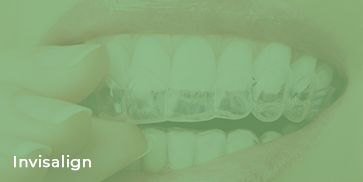What is CEREC?
CEREC is a intraoral scanning and software program that uses CAD/CAM (computer aided design/computer aided manufacturing) technology to take digital impressions quickly and generate a precisely fitted filling so you can leave Dr. Durisin sooner.
How can CEREC help you?
One of the biggest advantages of CEREC is its convenience. If you need a crown, inlay, or onlay, you can get your teeth restored during a single trip to our office. Traditionally, these procedures require two trips to the dentist.
The CEREC process lets you receive your permanent restoration the same day in our office, so you do not have to live for weeks with a temporary crown and schedule another appointment. In addition, Dr. Durisin and her team use digital impressions to make a mold for the restoration. This is more comfortable and accurate than traditional impressions with plaster.
Another benefit of CEREC is that it uses a single block of solid ceramic materials instead of pressed ceramic and metal. CEREC restorations are able to withstand moderate chewing so yours will last for years. The lifespan of a CEREC restoration is longer than similar work with traditional methods. In addition, the color of CEREC ceramic is closer to the color of your natural teeth, which will make your restoration virtually unnoticeable.
Fillings are the least invasive restorative treatment available. There is no single base material for fillings. What all fillings share in common is the use of a pliable material that fills in a portion of a tooth that has lost natural tooth structure, often as the result of treatment for tooth decay.
Fillings “fill in” areas of your tooth so you can enjoy restored oral health, restored bite balance, and a lower risk of future dental problems. While fillings are very affordable, unfortunately, they don’t last forever.
The most common use of white fillings is to restore strength and structure to your tooth following cavity treatment. Treating a cavity requires the removal of decayed tooth structure. The treatment restores oral health but leaves the treated tooth vulnerable to further decay.
Placing dental implants is the first phase of the procedure — and also the most complex. This is the surgery in which the implant posts are placed strategically beneath the gum line into the area where the missing tooth’s root structure once was. Our office works closely with an oral surgeon to ensure the best possible outcome.Implant placement requires plenty of planning. Your oral surgeon will take X-rays and scans of the jaw to determine precisely where the post(s) should be placed, often digitally planning your surgery in advance. Once the treatment plan is in place, the implant placement will be scheduled
soon after.
The procedure for implant placement occurs under local or general anesthesia, depending on patient preference and the complexity of the case. Sedation may be combined with local anesthesia for maximum comfort and relaxation. Once you are completely comfortable, the gum tissue will be opened and the implant post will be placed according to the specifications of your treatment plan. For traditional dental implants, the gums will then be closed once again and healing begins.You may wear a temporary tooth replacement during the recovery if needed.
What Happens during Dental Implant Restoration?
Dental implant restoration occurs once the implant posts have fully healed together with the jaw bone. This process, known as osseointegration, takes 4 to 6 months and creates a sturdy foundation for the new tooth replacement which will be placed on top. During this second phase, the implant posts will be exposed. After another brief healing period of one to two weeks, you return to our office to have a digital scan completed, in most cases, your implant crown and abutment will be ready the next day. In total, the procedure for dental implants can take up to 1 year to complete.
What Else Should I Know about Dental Implants?
Dental implants are by far the best method of replacing any number of missing teeth. Yes, they take a while to complete and you may have to visit the dentist several times throughout the process — but nothing else provides a long-lasting solution that also promotes oral and overall health like dental implants. Whether you are missing one, two, or an entire arch of missing teeth in the upper or lower jaw, don’t wait to find out whether or not you are eligible for dental implants.
Dental implants can also be used to support an entire set of prosthetic teeth. Using the patented and highly successful All-on-4 method, four small dental implants inserted in strategic locations throughout the jaw are used to anchor a full set of dentures in place. Because these implants are stable and durable, patients do not have to worry with denture slippage or the use of messy adhesives to keep their replacement teeth in place. This allows patients with�considerable tooth loss the ability to speak with confidence and eat a variety of foods with ease.
Healthy gums are the foundation to whole body health. Inflammation in the gums causes tiny cuts that allows bacteria from our mouths to enter our blood stream. This affects every organ that our blood feeds oxygen to (which is all of them). Chronic gum disease is linked to higher chances or heart attack, stroke, diabetes, and some inflammatory cancers.
Our office takes a detailed approach to helping you maintain optimal oral health. We will make recommendations based on how much inflammation we see, if there is bone loss, or if it has just been awhile since your last cleaning. Our treatment recommendations are customized to each individual patient. We also will spend time with you reviewing what you can do on your own at hope to minimize inflammation between cleanings.
















